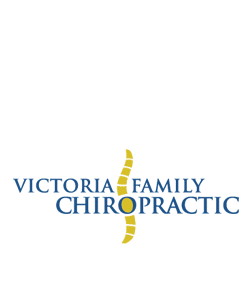Spinal Arthritis

Spinal arthritis (SA), also known as osteoarthritis, degenerative disc disease, degenerative joint disease, and degenerative arthritis is more common than you think. Osteoarthritis is by far the most common type of spinal arthritis and it is typically caused by trauma, poor mechanics (such as poor lifting technique), or repetitive strain from bad posture, though diet, genes, and other lifestyle factors can play a role as well. Most of the time we think of SA as something which only affects older people, but it can start in your teens and in some cases even earlier. There are, however, ways to treat it which are natural, safe, and effective (more about that later).
Spinal arthritis is diagnosed via X-ray, MRI (magnetic resonance imaging), or CAT scan (computerized axial tomography). The cause is cartilage between bones wearing, bones themselves changing, often growing spurs (osteophytes), and discs between spinal joints bulging, thinning, or cracking, and so losing their structural integrity. Often ligaments within or around joints thicken and lose their flexibility as well. These changes to spinal joints can cause symptoms such as intermittent pain, stiffness, or numbness. Interestingly, people can have advanced SA and not experience any pain. When things become inflamed or start pressing on spinal nerves, symptoms emerge more strongly.
SA tends to impact specific areas of the spine. These areas are often the lower back and neck because poor posture, mechanics, and trauma commonly affect these areas most. The mid back can get SA as well, especially from excessive rounding (hyperkyphosis) caused by poor posture and/or slouching.
Spinal Arthritis Symptoms
Morning stiffness and or pain that gets better with movement, heat, or improves as the day progresses is one of the most common symptoms. Often this pain returns toward the end of the day. If the degenerative wear is more advanced, it can cause weakness in one or both hands and legs. This happens when nerves get compressed from internal pressures such as a disc protrusion or a bone spur. If the spinal cord becomes effected, it is called spinal stenosis. Symptoms of spinal arthritis include:
- Joint tenderness when under pressure
- Pain, especially an ache that worsens with movement
- Some movements causing a sharp pain
- A crunching or grinding sensation heard when moving the spine especially in the neck
- Numbness, tingling, burning, or shooting sensations coming from the spine or travelling from it, often in the limbs
- Joint pain or swelling associated with barometric weather changes
- Joint stiffness or loss of motion
Spinal Arthritis Symptoms
There are many ways to treat spinal arthritis and alleviate any symptoms you may be experiencing. In some cases, the body will be able to heal itself to some extent, leaving you stronger and healthier.
- As a treatment for spinal arthritis, chiropractic is effective, safe, and most people tolerate it well, though individual style preference may play a role. Research has shown chiropractic to be the most successful treatment for lower back pain including pain caused by the effects of degenerative arthritis.[1]
- Spinal decompression is another effective and safe treatment specifically designed to repair the effects of SA especially for disc injuries. Decompression can promote healing in spinal discs and assist with the partial resorption of bulges by creating negative pressure on the discs, encouraging nutrient-rich fluids and oxygen to move in. The discs may never fully heal, but research has proven that some healing will take place.[2]
- Stretching is another way to improve spinal and joint health that I highly recommend. Hit this link for some videos of stretches and exercises I recommend. While stretching does not have the efficacy of chiropractic or spinal decompression, but is fantastic on its own or in conjunction with other treatments. Before stretching for spinal health and healing, speak with a health professional familiar with SA for proper positioning and technique.
- Spinal stabilization exercises, also known as core exercises, are important to keep spinal joints healthy and strong. I strongly recommend these exercises for everyone. Again, work with a medical professional to ensure you have proper form.
- Massage, acupuncture, physiotherapy, and other treatments can be very effective as well.
I recommend using many of these treatments together for the best outcomes and to minimize the risk of recurrence.
Spinal Arthritis Symptom Treatment
As well as treatment for the underlying cause, you may wish to treat the symptoms as well, especially initially.
- Omega-3 oil, fish oil in particular, has been shown to be good for reducing pain and inflammation associated with arthritis.[3]
- There are other forms of pain relief such as cannabinoids, pharmaceuticals, topical lotions, etc. Please keep in mind these will only treat the pain.
In conclusion, there is no way to cure or fully reverse the effects of degenerative arthritis, but the above recommendations can very likely alleviate pain, restore range of motion, and allow for an active and healthy lifestyle.
[1] National Center for Complementary and Integrative Health, “Spinal Manipulation for Low-Back Pain”
[2] Daniel DM. Non-surgical spinal decompression therapy: does the scientific literature support efficacy claims made in the advertising media? Chiropractic & Osteopathy. 2007;15:7. doi:10.1186/1746-1340-15-7.
[3] Maroon, Joseph Charles et al. ω-3 Fatty acids (fish oil) as an anti-inflammatory: an alternative to nonsteroidal anti-inflammatory drugs for discogenic pain. World Neurosurgery , Volume 65 , Issue 4 , 326 – 331
OFFICE HOURS
Monday
7:30am - 1:00pm
Tuesday
1:00pm - 7:00pm
Wednesday
7:30am - 1:00pm
Thursday
1:00pm - 7:00pm
Friday
7:30am - 1:00pm
Saturday
Closed
Victoria Family Chiropractic
3200 Shelbourne Street Suite 203
Victoria, BC V8P 5G8
(250) 592-5553



